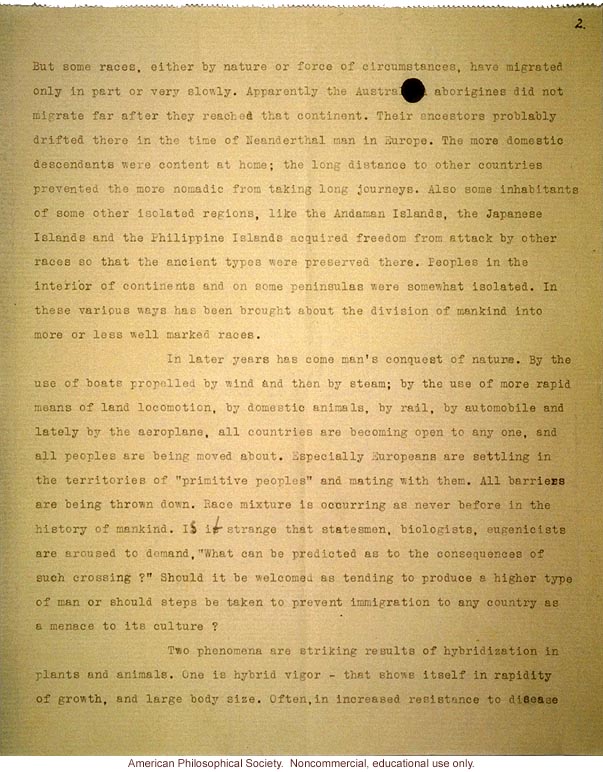But some races, either by nature or force of circumstances, have migrated only in part or very slowly. Apparently the Austral[obscured] aborigines did not migrate far after they reached that continent. Their ancestors probably drifted there in the time of Neanderthal man in Europe. The more domestic descendants were content at home; the long distance to other countries prevented the more nomadic from taking long journeys. Also some inhabitants of some other isolated regions, like the Andaman Islands, the Japanese Islands and the Philippine Islands acquired freedom from attack by other races so that the ancient types were preserved there. Peoples in the interior of continents and on some peninsulas were somewhat isolated. In these various ways has been brought about the division of mankind into more or less well marked races.
In later years has come man's conquest of nature. By the use of boats propelled by wind and then by steam; by the use of more rapid means of land locomotion, by domestic animals, by rail, by automobile and lately by aeroplane, all countries are becoming open to any one, and all peoples are being moved about. Especially Europeans are settling in the territories of the "primitive peoples" and mating with them. All barriers are being thrown down. Race mixture is occurring as never before in the history of mankind. Is it strange that statesmen, biologists, eugenicists are aroused to demand, "What can be predicted as to the consequences of such crossing?" Should it be welcomed as tending to produce a higher type of man or should steps be taken to prevent immigration to any country as a menace to its culture?
Two phenomena are striking results of hybridization in plants and animals. One is hybrid vigor - that shows itself in rapidity of growth, and large body size. Often, increased resistance to disease


